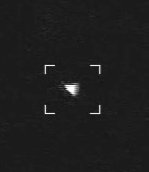The annual Perseid meteor shower peaked on Aug. 12 and 13, 2013, filling the sky with streaks of light caused by the meteoroids burning up in Earth’s atmosphere. Big meteor showers like the Perseids, are caused when Earth travels through a region of space filled with debris shed by a comet. The Perseids have been observed for at least 2,000 years and are the small fragments from comet Swift-Tuttle. These bits of ice and dust wander in space for centuries, finally burning up in the Earth’s atmosphere to create one of the best meteor showers of the year.
Compilation of Perseid meteors taken by the NASA All Sky Fireball Network cameras. Video credit: NASA/MSFC/MEO
This Perseid fireball meteor was observed in the skies over Chickamauga, Ga., on Aug. 11, 2013, at 2:14:49 a.m. EDT. It was also recorded by four other cameras in the NASA All Sky Fireball Network. Image Credit: NASA/MSFC/MEO



